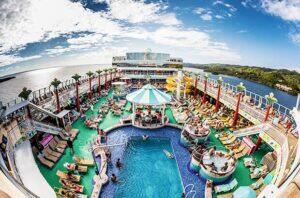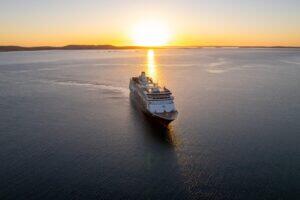Port Calls

On any given seven-day cruise, you'll usually have the opportunity to visit at least four unique destinations.
Contents
Each morning, you wake up in a new place, and each afternoon/evening you sail off to the next stop. What you do ashore depends entirely on your interests and comfort level when confronted by a new environment and culture. After your ship is cleared by local immigration officials, you’ll either walk down the gangway or board a tender and be taken ashore to explore.
Contents
Booking Shore Excursions
Traveling by cruise ship presents an opportunity to visit many places in a short time. Cruise lines offer shore excursions that appeal to a wide variety of tastes: sightseeing, hiking, biking, snorkeling, and a host of other activities. These excursions are tried and tested and, as a rule, provide a good experience, though they are sometimes overpriced. If you want to save money or just favor independence ashore, consider arranging your own touring. Simply research your destination ahead of time, and plan to book a private guide or taxi, rent a vehicle, use public transportation, or just walk around to delve into whatever interests you most.
INSIDER TIPUse a ship-sponsored tour if you want to explore an area that’s far from where the ship docks; if you are delayed, the ship will wait (otherwise, you’re on your own).
Going Ashore and Tendering
When your ship arrives in a port, it will either tie up alongside a dock or anchor out in a harbor. Before anyone is allowed off, the ship must be cleared for landing. Immigration and customs officials board the vessel to examine the ship’s manifest or passports and sort through red tape. Once cleared, you’ll be free to leave the ship with your boarding pass in hand. If the ship is docked, passengers simply walk down the gangway to go ashore. If your ship anchors in the harbor, however, you will have to take a small boat—called a launch or tender—to get ashore (the ride may take as much as 20 minutes). Participants in shore excursions are usually given priority. Passengers wishing to disembark independently may be required to gather in a public room, get sequenced tendering passes, and wait until their numbers are called. On a very large ship, which is more likely to use tenders, anticipate that the wait for a tender can be quite long (and frustrating).
INSIDER TIPBecause tenders can be difficult to board, passengers with mobility problems may not be able to visit certain ports.
Returning to the Ship
Cruise lines are strict about sailing times, which are posted at the gangway and announced in the daily schedule of activities. Be sure to be back on board (not on the dock waiting to get a tender back to the ship) at least a half hour to an hour before the announced sailing time or you may be stranded. If you’re on a shore excursion that was delayed—but sold by the cruise line—the captain will wait for your group before casting off. If you’re not on one of the ship’s tours and the ship sails without you, immediately contact the cruise line’s port representative, whose phone number is often listed on the daily schedule of activities.























